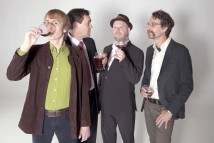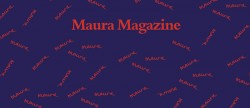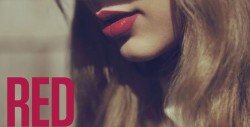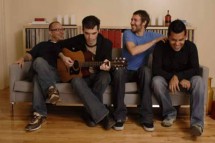This issue’s four pieces look at the processes that occur in conjunction with consumption, from education to intoxication, in an effort to make some sense of the seemingly endless array of things available to take in.

This issue’s four pieces look at the processes that occur in conjunction with consumption, from education to intoxication, in an effort to make some sense of the seemingly endless array of things available to take in.

The Bud Light Lime-A-Rita (and its strawberry cousin), reviewed.

Indiepop serendipity, discovered in a long-gone chain store.

“Amphetamine,” Peter Laughner, and an eerily timed microphone malfunction at a speaking engagement.

Brad Cohan has a chat with the lead singer of grunge lifers Mudhoney.

Today a new version of Maura Magazine is availble for download from the iTunes Store, and I’m thrilled about the work that the team at 29th Street Publishing did on it. There are a bunch of user-interface improvements, including smoother navigation & scrolling, smaller issue sizes, improved performance and stability, and an lower overall memory […]

Thanks to savvy marketing by the likes of Apple and Google, free virtual places eventually become just as real as the corner store. But now Google Reader has a “Closed” sign at the door.

An interview with Community writer Maggie Bandur.

What is Rick Moody’s problem with Taylor Swift?

How football and videotape plunge America into a hyperreality each Sunday—and how that process recalls the origins of dub.
Shadowing the past few campaigns of the National Football League like a corner in man-to-man coverage has been the medical revelation of irreparable brain damage caused by merely playing the game. With every post-game recap, there seemed to follow even more news on helmet-to-helmet hits, new scientific studies revealing the depths of such trauma, all of it lingering over the game like post-concussion symptoms. Commentary has aired on 60 Minutes and in Time (in 2009, a deflated pigskin illustrated a cover with the headline “The Most Dangerous Game”) and The New Yorker, where Malcolm Gladwell’s article “Offensive Play” discussed the brown tau and beta-amyloid stains that appear on the brains of players who have suffered too many head-on collisions. He noted that NFL players suffered five times higher than average diagnoses of “dementia, Alzheimer’s disease, or other memory-related disease” after their playing years were behind them, adding a lineman’s description of a standard downfield drive: “Every play, collision, collision, collision… literally, these white explosions—boom, boom, boom—lights getting dimmer and brighter, dimmer and brighter.”

The idea of waffle-flavored vodka is oddly beautiful, a microcosm of the absurdity of humanity. And because of that, it shouldn’t just sit on the shelves of liquor stores, only to be consumed by teens on a dare.

I love a man who believes in multi-level marketing schemes. We sit in a hotel meeting room, a room named after the state flower followed by the letter B. My boyfriend, this man I love, is on the edge of his seat. There is a thin sheen of sweat on his forehead and upper lip. He is taking furious notes, digging his pen into the legal pad on his lap so hard everyone can hear his desperation.
When we first met, at a cocktail party for my job, he was tending bar. He wore a crooked bowtie and a wrinkled vest, a stained, short-sleeved white dress shirt and black slacks, also stained, which were a different black from the vest. I ordered a gin and tonic and he told me I had beautiful eyes. I watched as he made my drink, deftly pouring the right amounts of gin and tonic, cutting me a fresh slice of lime. He blew his shaggy hair out of his eyes and smiled as he handed me my drink. I took a sip and stared at him coolly. “You are a real mess,” I said. He shrugged, looked behind me and nodded for the next customer to give their order.
The man at the front of the room walks back and forth across the stage. He talks with his hands, is the kind of person you would say is animated. He is a short man with a bright shiny bald spot that gleams beneath the fluorescent lights. Every few minutes, he points one of his thick fingers toward an audience member and pulls them up front. I keep my head down. I don’t care for audience participation. His name, or the name he goes by, is Billy Bobby. I’m not quite clear on what Billy Bobby is selling but his racket involves websites and reselling and search engine optimization. I know enough to know his ideas are total bullshit while my boyfriend thinks Billy Bobby is preaching some kind of gospel.

Tumwater, Washington, might not have turned out as much legendary music as Evergreen State cities like Seattle or Olympia, but it did birth two pioneers of sonic bludgeoning: The sludge-ripping Melvins disciples KARP and DIY art-punk heroes Unwound. A decade or so after each of those bands melted down, both trios have more or less escaped M.I.A. status. KARP stars in the awesome yet tragic documentary on record and the tour circuit throughout the ’90s—have teamed up to bring their band back from the dead. Guitarist/singer Justin Trosper, bassist Vern Rumsey, and drummer Sara Lund have launched a website replete with stories, pics, and video and released the double LP Live Leaves.

Hood Chef was born Hector Vasquez on February 29—which means that the rail-thin, tattoo-covered Brooklyn resident has been bucking the norm pretty much since birth. Like many growing up in the Borough of Kings in the 1980s and 1990s, Hood Chef was constantly inundated with the idea that slinging rock or having a wicked jump shot were the only viable options to get off the grimy corners of Crooklyn. He escaped the street life without doing either, but he stayed in the hood—because that’s where he felt most needed.

On December 29, the Twitter account @itsrealTED tweeted, “I’m pretty sure that if Walt Disney watched Disney Channel today, he would cry.” Never mind that Disney died in 1966, 17 years before his eponymous channel was launched in 1983: that truism is worthless in isolation, except for the nearly 1,000 retweets and nearly 400 favorites it’s received. Stack those gaudy stats next to those racked up by other messages sent from @itsrealTED and hundreds of other popular parody Twitter accounts, though, and a clearer, if seedier, picture emerges.

As members of ’90s emo band Texas Is The Reason slowly walked out of the dark to their instruments at the Music Hall of Williamsburg, you could hear the dense, spiderwebbing guitars of their one instrumental, “Do You Know Who You Are?,” issue from the speakers in neat overhead streams. The stage was traced with small circular lights, as if powered by tiny, diminished suns. During their two-show 2006 reunion, the band were enhanced by dynamic, interweaving spotlights; this setup felt as if they were consciously creating a new environment, tended by warmth.
Guitarist Norman Brannon played the opening chords of “Antique”: a few drifting chords that seem very near one another, that feel naturally related, like bodies of water. Garrett Klahn sings in one note that sounds painfully excavated; it resembles a stream pushing gravel. All of the band’s music has a watery aspect, actually—each song gives off the sense that it will feed into a larger or smaller embodiment of itself.

It’s the first week of 2013. Superstorm Sandy blew through two months ago. “The power’s out.” My son calls me at work to tell me this, and it all comes back—the cold, the dark, the days without power. I have flashbacks. My heart starts to do its palpitation thing and I reach into my bag for a Xanax even as I’m dialing the number for the Long Island Power Authority. “Your power will be back on by 11 a.m.,” a recorded voice assures me. I am not optimistic.